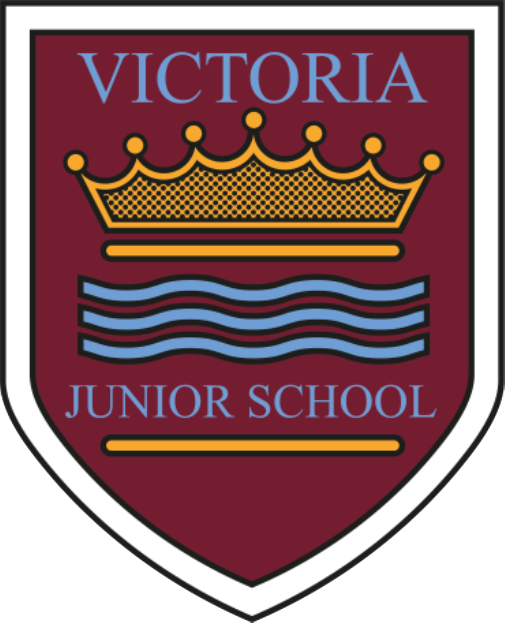Mathematics
Subject Statement – Intent, Implementation and Impact
Subject: Mathematics
Subject Lead: Alexander Farmer, supported by Holly Trew
Intent:
At Victoria Junior School we aim to:
-
Develop a positive attitude towards mathematics
-
Develop mathematical understanding through systematic direct teaching of appropriate learning objectives
-
Develop confidence and foster resilience in Mathematics
-
Encourage the effective use of mathematics as a tool in a wide range of problem solving activities within school and, subsequently, adult life
-
Develop an ability in the children to express themselves fluently, to talk about the subject with assurance, using correct mathematical language and vocabulary
-
Develop mathematical skills and knowledge and quick recall of basic facts
-
Develop a range of efficient mental calculation strategies for all four operations;
-
Be confident using written calculation methods for all four operations.
Implementation:
Planning in mathematics is in line with the structures and recommendations outlined in the National Curriculum Programmes of Study.
We are currently following a ‘Mastery Approach’ of teaching Mathematics across the school. Mastering maths means pupils acquiring a deep, long-term, secure and adaptable understanding of the subject. The phrase ‘teaching for mastery’ describes the elements of classroom practice and school organisation that combine to give pupils the best chances of mastering maths. Achieving mastery means acquiring a solid enough understanding of the maths that has been taught to enable pupils to move on to more advanced material.
Across all year groups, we follow the White Rose scheme of learning blocks which maps out the year’s curriculum across the three terms. This supports the ‘Mastery Approach’ of teaching Mathematics. We then use the lesson-by-lesson overviews to plan our lessons daily (1 hour for 5 days). Teaching flips/PowerPoints list the specific learning objectives for each lesson. For CPD and support with teaching, staff can use the White Rose teaching videos.
We supplement the White Rose resources by planning scaffolds for children who are working below their current year group. We also ensure that all children get a chance to deepen their understanding of mathematical concepts using a range of additional resource (for example, classroom secrets discussion questions and White Rose reasoning and problem and solving).
One of the main aspects of ‘teaching to mastery’ is the concrete-pictorial-abstract approach (CPA) which insists that children understand key concepts using concrete manipulatives, are exposed to and can record scenarios using pictures and can then apply this understanding in an abstract way. It is important that links between the three stages are explicitly made during teaching and that all children, regardless of ability or age, are exposed to a variety of different representations because of planned conceptual variation. Children are encouraged to use concrete and pictorial resources as a way of understanding mathematical concepts, as opposed to using them as a method to solve equations. Explicit links are made between concrete and pictorial representations and written methods to solve abstract calculations.
The structure of a lesson will vary based on the topic covered and the needs of the pupils. Steps throughout a lesson are small to ensure that all pupils understand the key concepts before they are exposed to new ones. It is expected that all pupils have the opportunity to apply their understanding of a topic as a result of their exposure to rich and deep mathematical problems.
Each Mathematics lesson starts with a ‘check in’ to assess pupils starting point. During a lesson, children will be given the opportunity to practise new skills, apply these skills in different ways as a result of variation or within a different concept and reason and explain about the concept. It is expected that the majority of pupils reach a depth task in the majority of lessons. White Rose Resources may need to be edited to suit the needs of individual classes. Question types may need to be limited to allow progression to the depth questions.
The majority of children in a class move through the programme of study at broadly the same pace and are exposed to the same questions during lessons. Learners are supported by the structure of the lesson, their peers and additional adults as well as scaffolds provided by teachers. Children are extended as a result of higher order questioning where conjectures and generalisations are required and consistent exposure to rich tasks, rather than acceleration to new content. It is expected that all pupils will experience challenge in a lesson.
Key number facts, mathematical vocabulary and written methods are also embedded in children’s long-term memory through the use of frequent and varied retrieval practice. Children answer children are regularly given quizzes on arithmetic and varied fluency on previous learning to secure understanding and build accuracy, confidence and speed in solving calculations.
We also have Times Table Rock Stars as a tool to support pupils both at home and in school to become fluent in recalling multiplication facts.
Impact:
The progress of the pupils is measure by the skills and knowledge they have gained. Assessments include book monitoring, teacher assessment, pupil interviews, topic tests, termly tests and phase/year group moderation. Pupils complete a standardised PiXL test each term, which identifies areas of weakness for the individual, groups of pupils and year groups.
